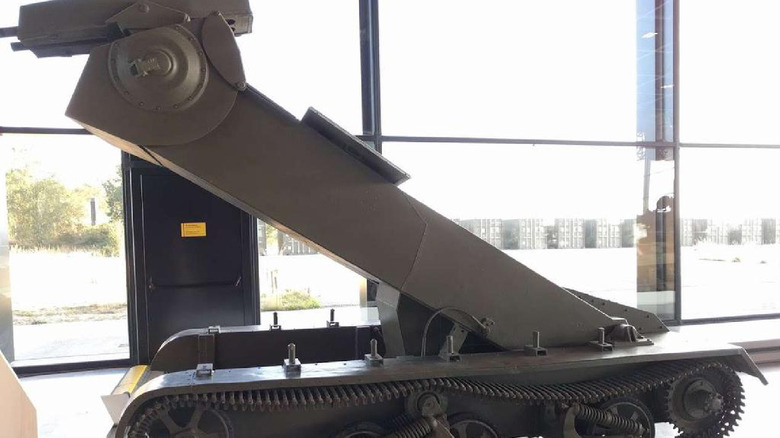One Of The Weirdest Tanks Of WWII: The Praying Mantis
World War II saw a wide variety of tanks deployed by Allied and Axis forces, but one of the strangest of the era was a British model that, despite some useful features, never actually saw its way into battle.
The Praying Mantis was privately funded and built by Ernest James Tapp, the co-founder of County Commercial Cars. He secured the patent for the design in 1937 and started building the unique machine a few years later as the war raged across Europe. The early prototype was built to test the design, which featured a tiny personnel compartment inside the Mantis' neck, which rode atop a tracked section. It had a crew of two, who rode lying prone in the neck section. The neck could be raised by as much as 55 degrees, and the head, which held the two .303 Bren light machine guns, could be pivoted as well. The praying mantis could be driven with the head and neck in any position.
It was meant to be able to crawl stealthily amid the cover of fences and trees, and then extend to allow it to fire over those same obstacles. It was steered by bending the tracks slightly. The praying mantis presented a very small silhouette for enemies to fire on and the two crew members remained protected inside the hull at all times.
In 1943, Tapp built a new prototype, using the venerated universal carrier as the lower chassis.
[Featured image by Leander9999 via Creative Commons|Cropped|CC by 4.0.]
The Praying Mantis made its riders motion sick
Both prototypes were powered by a 3.9 liter Ford V8 engine that produced 85 hp. However, a big reason the tank never made it to the field was that the neck swayed back and forth as well as bouncing up and down, bogging many of the crew members who tested it down with aggressive motion sickness.
The controls were also difficult to use, and, in 1944, the British Army gave up on the Mantis. The first prototype was turned into scrap metal, but the second one is now housed in the Bovington Tank Museum in Dorset. Despite the fact that the Praying Mantis was ultimately a failure as a battlefield weapon, the concept of an armament that could be raised up over obstacles and lowered for transport did find its way into other military machines such as the anti-tank guided missile launching FV1620 Humber Hornet.
[Featured image by Leander9999 via Creative Commons|Cropped|CC by 4.0.]
